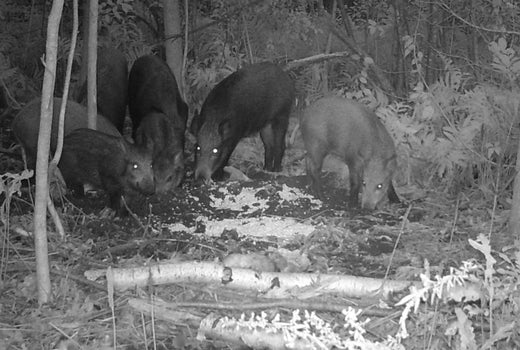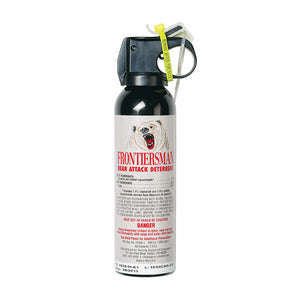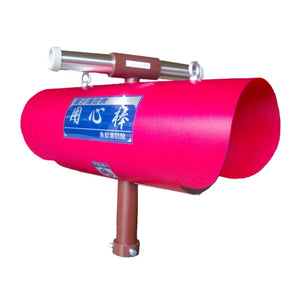Wild boars cause crop damage of about 5 billion yen a year. In addition to damage to agricultural crops, in urban areas, garbage is destroyed, people are attacked, and cars collide with them. The number of reports on TV is increasing, and the image of being a nuisance is spreading, but if it avoids humans without killing them, it would be better. In this article, I would like to introduce some things that wild boars dislike.
Capsaicin + blue material
Capsaicin is the main ingredient that gives chili pepper its spiciness. When chili peppers come into contact with the skin, even humans experience a burning sensation, sneezing, and tears. In the past, I used to remove the stalks and seeds from raw chili peppers, and at first it was just a tingling sensation, but later it became so painful that I was burned.
The reason why you feel such stimulation is that capsaicin stimulates nerves, but it also has a repellent effect on wild birds and beasts. Wild boars also show repellent behavior against the odor of chili peppers.
In the past, there was an experiment to verify repellent materials against wild boar, and the result was that red pepper extract + pyroligneous acid had no repellent effect ( research report of Wakayama Prefectural Agriculture, Forestry and Fisheries Technology Center ). There is also an opinion that it is not effective.
On the other hand, in another area, a combination of blue materials and capsaicin has been successful in preventing wild boar invasion ( Gunma Prefectural Board of Education Environmental Practice Casebook ). Again, when capsaicin was applied alone, the effect was short-term, but soon wore off.
To increase the repellent effect, the combination of blue material and capsaicin seems to be the point. Wild boars have type 2, 2, and 2 color vision, and do not have photoreceptors that can detect green. Therefore, it is said that they cannot perceive red or green, and only perceive blue.
Wild boar repellent products that use the repellent effect of capsaicin and blue materials have also been developed, and are also used by fields, golf courses, NEXCO and JR. seeing is believing. You can check it out in the video below.
ultrasound or light
There are many products that use ultrasonic waves and light to repel wild boars and other wild animals.
Ultrasound is a sound wave with a high frequency (frequency) that is inaudible to the human ear. It is said that the human ear can hear sound waves with a frequency of 20 Hz to 20 kHz, but by irradiating sound with a higher frequency, it is a mechanism that intimidates pests and makes them escape.
There is an experiment in which an ultrasonic irradiation device was installed near a drinking fountain for wild boars ( reference ). According to this, the average length of stay near the drinking fountain decreased by about 50% or more before and after ultrasonic irradiation, and in particular, they disliked ultrasonic irradiation with a volume of about 70 dB or more and around 20 kHz , and took avoidance behavior. It was confirmed that
Attempts are also being made to drive away wild boars using drones equipped with ultrasonic transmitters ( reference article ). Using an infrared camera, they found a wild boar, approached it, and emitted ultrasonic waves of 4 kHz to 50 kHz . * In the first place, it is possible that the drone was surprised and ran away. . .
Also, as mentioned above, taking advantage of the fact that wild boars avoid blue, there are many products on the market that automatically flash blue LEDs. In Yamaguchi Prefecture, a demonstration test is being conducted of a new measure to reduce damage to wild boars using powerful LED lights that emit light from sensors ( Yamaguchi Prefecture press release ).
explosion
A long time ago, there were many explosions that used LP gas. It makes a loud roar periodically, and at first, even wild boars are frightened and have a repelling effect. Also, since it is difficult to adjust the volume, it is likely to lead to complaints.
In consideration of these, products that emit the barking of hunting dogs and the barking of wolves, which are natural enemies, are now on sale. Some of them are operated by sensors and the volume can be freely adjusted, and some of them are designed to emit various sounds at random, taking into account the boar's habituation through learning.
* Explosive sounders are relatively inexpensive and easy to handle, but use in areas where farmland and residences coexist is likely to lead to noise complaints, so sufficient consideration is required.
others
Sprinkling the urine of natural enemies, wolves, may also be effective. On the other hand, no avoidance behavior was observed against the odor of wolf urine itself, and it was concluded that the reason for the avoidance effect was that the wolves were wary of a sudden change in the environment where an object with an odor was placed. There is also ( research report of NARO ). Wild boars are very cautious and tend to avoid things that are out of the ordinary.
It is said that wild animal droppings and human hair are also repellent, but in the video above, the wild boar does not show repellent behavior and eats them.
In addition, it is possible that the wild boar was not avoiding the thing that was said to have a temporary repelling effect, but that it was actually wary of environmental changes, so blindly believe in things that have no basis. It is better to avoid doing so.
summary
I tried to summarize what wild boars hate. If you have physical intrusion prevention measures such as protective fences, you can expect to increase your defense power by introducing supplementary measures such as those introduced this time.
In addition, the basic countermeasures are to improve the view by cutting bushes and to create an environment in which wild boars do not approach by not leaving food unattended.
▶Click here for the special page on measures against wild boars>>

 箱罠
箱罠
 くくり罠
くくり罠
 パーツ類
パーツ類
 電気柵
電気柵
 自作キット
自作キット
 防獣グッズ
防獣グッズ
 監視カメラ
監視カメラ









 box trap
box trap
 tying trap
tying trap
 enclosure trap
enclosure trap
 Prevention and avoidance goods
Prevention and avoidance goods
 electric fence
electric fence
 trap surveillance camera
trap surveillance camera
 transportation goods
transportation goods
 Trap detection sensor
Trap detection sensor
 hunting supplies
hunting supplies
 hunting books
hunting books
 Anti-bird goods
Anti-bird goods
 Agricultural materials/machinery
Agricultural materials/machinery
 boar
boar
 deer
deer
 Kyon
Kyon
 monkey
monkey
 raccoon
raccoon
 Badger
Badger
 palm civet
palm civet
 raccoon dog
raccoon dog
 nutria
nutria
 mouse or rat
mouse or rat
 Mole
Mole
 bear
bear
 pigeon
pigeon
 Crow
Crow







